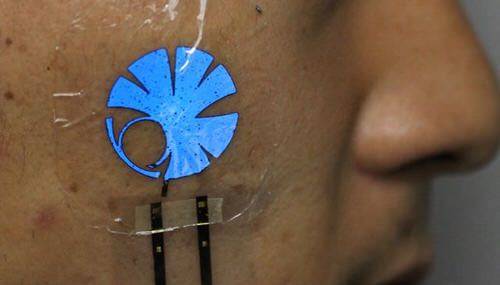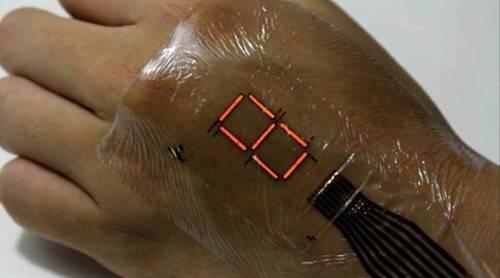The current wearable market consists of smartwatches, fitness trackers, and health sensors, but those technologies might be merely a stepping stone towards thinner, lighter, and less abrasive “e-skin” products.
E-skin is as thin and flexible as human skin, but past tests have shown it to be expensive and not last very long. However, the University of Tokyo has published a new study in Science Advances, detailing an organic polymer light-emitting diodes (PLED) that lasted for more than a week.
See Also: The risk on your wrist: Are hackers targeting your wearable data?
The super-thin, transparent material was able to light up when touched and light up specific parts at a time. In the test, the University of Tokyo demonstrated its school logo lighting up when touched and seven bars that show different numbers and letters.
While it might seem rather basic, future concepts might show your heart-rate in real time or receive notifications from your smartphone, similar to a smartwatch. The difference being instead of a clunky piece of metal on your wrist, you have a low-key transparent tattoo that only shows information when necessary.
Other advances the University of Tokyo were able to make included less power consumption, more time exposed to organic air, and less heat. The more time exposed is a big achievement, considering most organic PLED’s tested before did not last more than a few hours.
Non-organic PLED’s have lasted weeks, but the University of Tokyo said non-organic is non-viable for commercial production, as it is too expensive and requires more materials.
E-skin might not be on the market before 2020, but in the past two years we’ve went from a few hours tops with limited functionality to a few days with sensors, lights, and touch functionality. That’s a good sign for developers and researchers looking to make e-skin the next wearable revolution.










